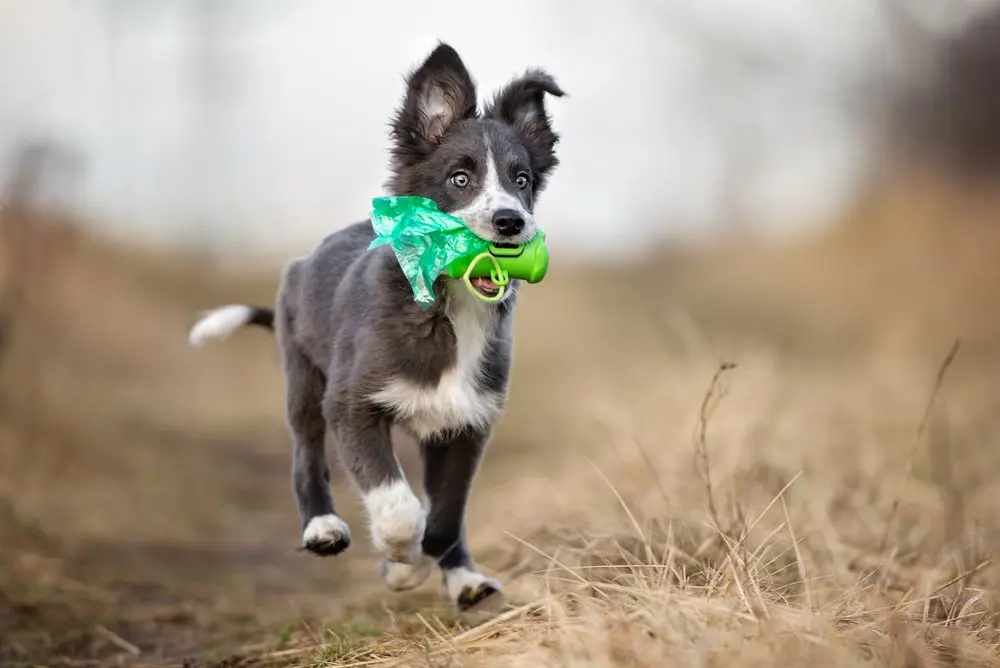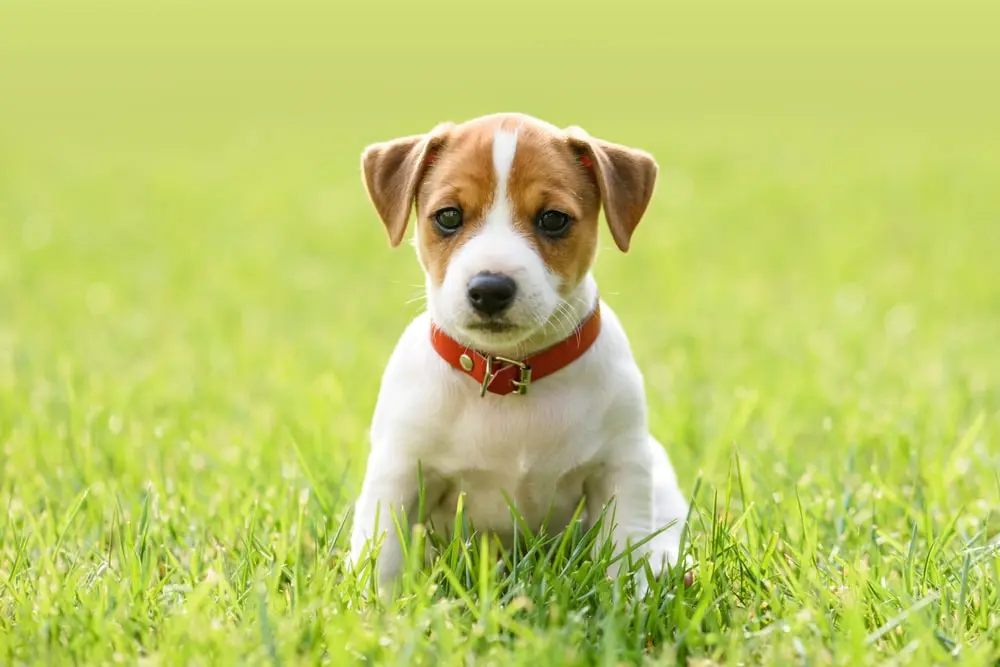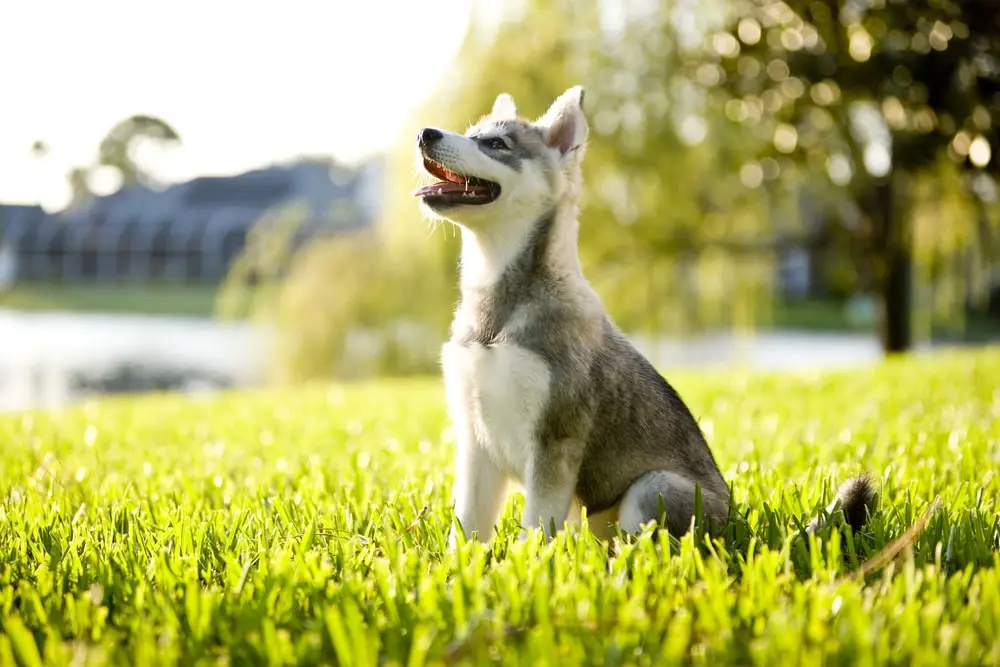PET BEHAVIOR
One of your first priorities as a pet owner may be be to potty train your puppy. Crate training, setting up a consistent schedule, and having realistic expectations can help. It may take time and effort, but your puppy and your carpets will thank you for it.
If you’re not sure about how to potty train a puppy, here are some key steps and helpful tips to get you started.
Tools You’ll Need for Puppy Potty Training
- Expandable dog crate
- Leash
- High-quality training treats
- Favorite toy
- Enzyme dog urine cleaner
- Baby gates (optional)
- Puppy pads or a doggy toilet (optional)
How Long Does It Take To Potty Train a Puppy?
A few months to 1 year, depending on the puppy’s age, breed, and temperament.
How To Potty Train a Puppy: Step-by-Step Instructions
According to the American Kennel Club, you can start training your puppy around 7 – 8 weeks of age or as soon as they’re old enough to be separated from their mother.1 If your new puppy is older than that, you’ll want to start training them right away. But how? The best way to potty train a puppy is to control their environment inside and take them outside frequently. Here are the basic steps to follow over the next few months:
- Get an expandable dog crate and set it up in your house. Put your puppy in the crate whenever you can’t be with them and overnight while you’re sleeping.
- Take your puppy outside as soon as they wake up in the morning. Put them on a leash and take them directly to the spot where you want them to relieve themself.
- Give them lots of time to explore the area and go potty.
- When they pee or poop in their designated area, give them a tasty treat and lots of praise immediately. The best dog training treats for potty training are special and only given as a reward after a successful trip outside. You can also give them playtime with a special toy as a reward instead.
- When you’re both ready to go back inside, either put them in their crate or an enclosed area where you can keep an eye on them. Repeat the potty process one hour later and every hour after that.
Continue following these steps, and as they improve, consider giving your dog more access to your home. Have them on leash when introducing them to new places in your home so you can easily rush them outside if you notice any signs that they might have to go potty (such as excessive sniffing).
How Often Should I Take My Dog Outside To Go Potty?
You should take your dog outside to their potty area often during training. If necessary, set an alarm and take them outside once per hour. Additionally, take them outside after they eat and drink, after they play, after they chew a bone, and after they wake up from a nap or overnight sleep.
What Happens If They Have an Accident?
If you catch your puppy having an accident in the house, run and pick them up as they’re relieving themself, then rush them outside to their potty area. Picking them up midstream should stop the accident. Praise them when they go potty outside.
When Can I Consider My Puppy Potty Trained?
As a rule, a dog is considered potty trained if they have gone one month without any accidents in the house.
Why Use the Crate Training Method?
While there are different methods for potty training a puppy, crate training can help set your dog up for success.
It may seem unkind to keep a puppy in a crate, but dogs are den animals and often feel safer when they have a “cave” or safe space of their own. Dogs are also very clean creatures and don’t like poop or pee in their space any more than we do. This method helps teach them that there are good and bad places to relieve themselves.
It also helps create a routine for your pup and protects them from getting into things they shouldn’t — all of which sets your dog up for success while potty training.
How To Use the Crate for Potty Training
Don’t just put up your crate and call it a day. You’ll want to make your puppy’s crate feel like their home within your home without giving them too much space to start marking their territory.
Use an expandable crate that has dividers that you can use to partition the space. Create a space that is just large enough for the dog to lie down, stand up, and turn around in. Otherwise, your puppy will feel that it’s OK to use one corner of the crate to poop or pee. As your puppy grows, you can remove the dividers to expand the crate and give them more room.
More Tips for Potty Training a Puppy
Every dog is different, but these helpful tips can help make training easier and help you to set realistic expectations for your puppy and yourself.
1. Create a training safe zone
During this time of training, don’t let your puppy roam unattended or they may learn that it’s OK to urinate or defecate anywhere in the house. In addition to the crate method, you can use baby gates to confine your puppy to a specific area of your home, preferably one with easy-to-clean floors.
2. Watch for signs that they have to go out
When your puppy indicates that they want out of their crate by whining and scratching, take them outside. Don’t delay or they may get the idea that it’s OK to mess up their living space.
If getting outside quickly is a challenge for you or your puppy, you can also use puppy pads or a dog potty to create a designated spot where they can go in the house. This way, the puppy learns that there’s a right place to pee until you’re able to take them out for a walk.
3. Set a walk schedule
During your training period, try to take your puppy for walks on a consistent schedule, even if they aren’t showing signs that they have to go. You should try to take your puppy out for a walk at least once an hour.
This can be time-consuming at first, but the sooner your puppy understands that there’s a time and a place to go, the faster it will be to train them. Over time, your puppy may even have a favorite potty spot.
4. Respect your puppy’s limits
As you get into the swing of potty training, you’ll probably find yourself going longer between potty breaks outside. But make sure you don’t push it too long.
According to The Humane Society, your puppy should be able to hold it in for one hour for every month of age up until 6 – 9 months.2 So if your puppy is 3 months old, expecting them to hold it in for more than 3 hours is unrealistic.
If you can’t be home during the day, try to arrange for a dog walker, friend, or neighbor to take them out at least once or twice while you’re away.
5. Set a feeding schedule
A puppy has a smaller bladder and bowels than an adult dog, so feeding your puppy 2 – 3 smaller meals a day can help them get the nutrients to grow and not overeat because they’re wolfing down a bigger meal. Overeating can lead to diarrhea and other digestion issues which can make potty training harder. It’s also a good idea to invest in good quality puppy food and consult your veterinarian to set up a feeding schedule that works best for your puppy’s health.
You should also take away your puppy’s water dish about 2 – 3 hours before bedtime. That way they’re less likely to need to pee during the night and everyone can get some sleep.
6. Use positive reinforcement
Puppies respond much better to praise than punishment. As previously mentioned, it's effective to reward your dog with verbal praise every time your puppy goes outside. Follow up that verbal praise with high-value treats or a favorite toy that they only get after they go potty outside.
7. Don’t scold or shame your puppy
Scolding your puppy after they’ve had accidents in the house (or worse, pushing their nose into the mess) won’t teach your puppy good behavior. Negative reinforcement will just confuse them and make them more anxious, making it harder to train them. The important thing is to be consistent and remember that rewarding good behavior leads to good habits.
8. Stay consistent
Another key to successful potty training for a puppy is consistency. This applies to everything from when you take them out for a walk to the amount of food and water you provide them during the day. Dogs thrive when they’re provided a consistent schedule, so this gives them the best environment to succeed.
9. Be patient
The most important thing to remember when potty training a puppy is to be patient, both with your puppy and yourself. After all, even the brightest puppies and owners with the best intentions will make mistakes and a good enzyme cleaner can usually handle most pet stains from an accident.
10. Know where your dog came from
Find out if your puppy came from a less-than-ideal situation before you brought them home. If they’ve experienced animal cruelty, they may be more resistant to being put in a crate or following directions. This means it may take longer for them to learn, as they are also learning how to trust you. Knowing where your dog came from can help you to adjust your approach to training.
Thinking Beyond Potty Training? Consider Pet Insurance for Your Pup
Of course, potty training your puppy isn’t the only challenge you’ll be facing. Puppies are notorious for getting into trouble, eating things they shouldn’t, and occasionally getting sick or injured. If you’re worried about covering your vet bills, getting puppy insurance may be worth it for your peace of mind.
Depending on your policy, dog insurance may help cover vet bills, supplements, prescription meds, and even surgeries.3 Get started with a free quote today.



